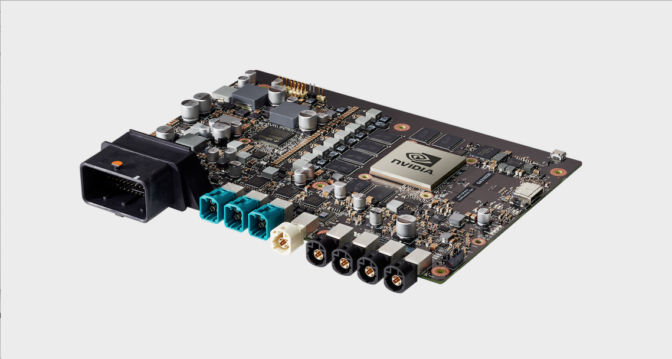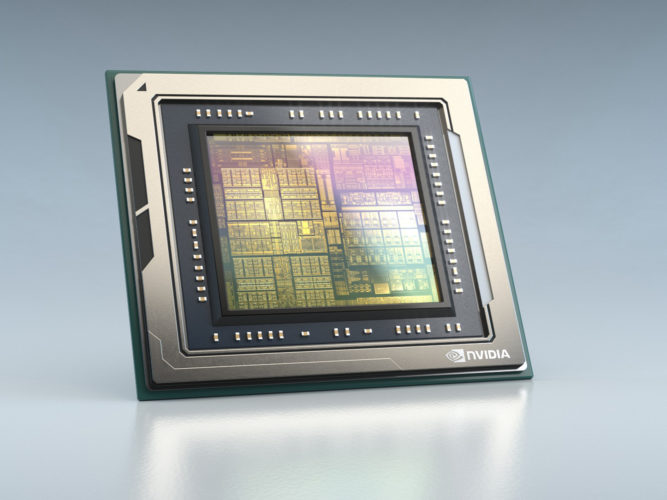AI-powered vehicles aren’t a future vision, they’re a reality today. And they’re only truly possible on NVIDIA Xavier, our system-on-a-chip for autonomous vehicles.
The key to these cutting-edge vehicles is inference — the process of running AI models in real time to extract insights from enormous amounts of data. And when it comes to in-vehicle inference, NVIDIA Xavier has been proven the best — and the only — platform capable of real-world AI processing, yet again.
NVIDIA GPUs smashed performance records across AI inference in data center and edge computing systems in the latest round of MLPerf benchmarks, the only consortium-based and peer-reviewed inference performance tests. NVIDIA Xavier extended its performance leadership demonstrated in the first AI inference tests, held last year, while supporting all new use cases added for energy-efficient, edge compute SoC.
Inferencing for intelligent vehicles is a full-stack problem. It requires the ability to process sensors and run the neural networks, operating system and applications all at once. This high level of complexity calls for a huge investment, which NVIDIA continues to make.
The new NVIDIA A100 GPU, based on the NVIDIA Ampere architecture, also rose above the competition, outperforming CPUs by up to 237x in data center inference. This level of performance in the data center is critical for training and validating the neural networks that will run in the car at the massive scale necessary for widespread deployment.
Achieving this performance isn’t easy. In fact, most of the companies that have proven the ability to run a full self-driving stack run it on NVIDIA.
The MLPerf tests demonstrate that AI processing capability lies beyond the pure number of trillions of operations per second (TOPS) a platform can achieve. It’s the architecture, flexibility and accompanying tools that define a compute platform’s AI proficiency.
Xavier Stands Alone
The inference tests represent a suite of benchmarks to assess the type of complex workload needed for software-defined vehicles. Many different benchmark tests across multiple scenarios, including edge computing, verify whether a solution can perform exceptionally at not just one task, but many, as would be required in a modern car.
In this year’s tests, NVIDIA Xavier dominated results for energy-efficient, edge compute SoCs — processors necessary for edge computing in vehicles and robots — in both single-stream and multi-stream inference tasks.
Xavier is the current generation SoC powering the brain of the NVIDIA DRIVE AGX computer for both self-driving and cockpit applications. It’s an AI supercomputer, incorporating six different types of processors, including CPU, GPU, deep learning accelerator, programmable vision accelerator, image signal processor and stereo/optical flow accelerator.

Thanks to its architecture, Xavier stands alone when it comes to AI inference. Its programmable deep neural network accelerators optimally support the operations for high-throughput and low-latency DNN processing. Because these algorithms are still in their infancy, we built the Xavier compute platform to be flexible so it could handle new iterations.
Supporting new and diverse neural networks requires processing different types of data, through a wide range of neural nets. Xavier’s tremendous processing performance handles this inference load to deliver a safe automated or autonomous vehicle with an intelligent user interface.
Proven Effective with Industry Adoption
As the industry compares TOPS of performance to determine autonomous capabilities, it’s important to test how these platforms can handle actual AI workloads.
Xavier’s back-to-back leadership in the industry’s leading inference benchmarks demonstrates NVIDIA’s architectural advantage for AI application development. Our SoC really is the only proven platform up to this unprecedented challenge.
The vast majority of automakers, tier 1 suppliers and startups are developing on the DRIVE platform. NVIDIA has gained much experience running real-world AI applications on its partners’ platforms. All these learnings and improvements will further benefit the NVIDIA DRIVE ecosystem.
Raising the Bar Further
It doesn’t stop there. NVIDIA Orin, our next-generation SoC, is coming next year, delivering nearly 7x the performance of Xavier with incredible energy-efficiency.

Xavier is compatible with software tools such as CUDA and TensorRT to support the optimization of DNNs to target hardware. These same tools will be available on Orin, which means developers can seamlessly transfer past software development onto the latest hardware.
NVIDIA has shown time and again that it’s the only solution for real-world AI and will continue to drive transformational technology such as self-driving cars for a safer, more advanced future.
The post NVIDIA Xavier Shatters Records, Excels in Back-to-Back Performance Benchmarks appeared first on The Official NVIDIA Blog.
